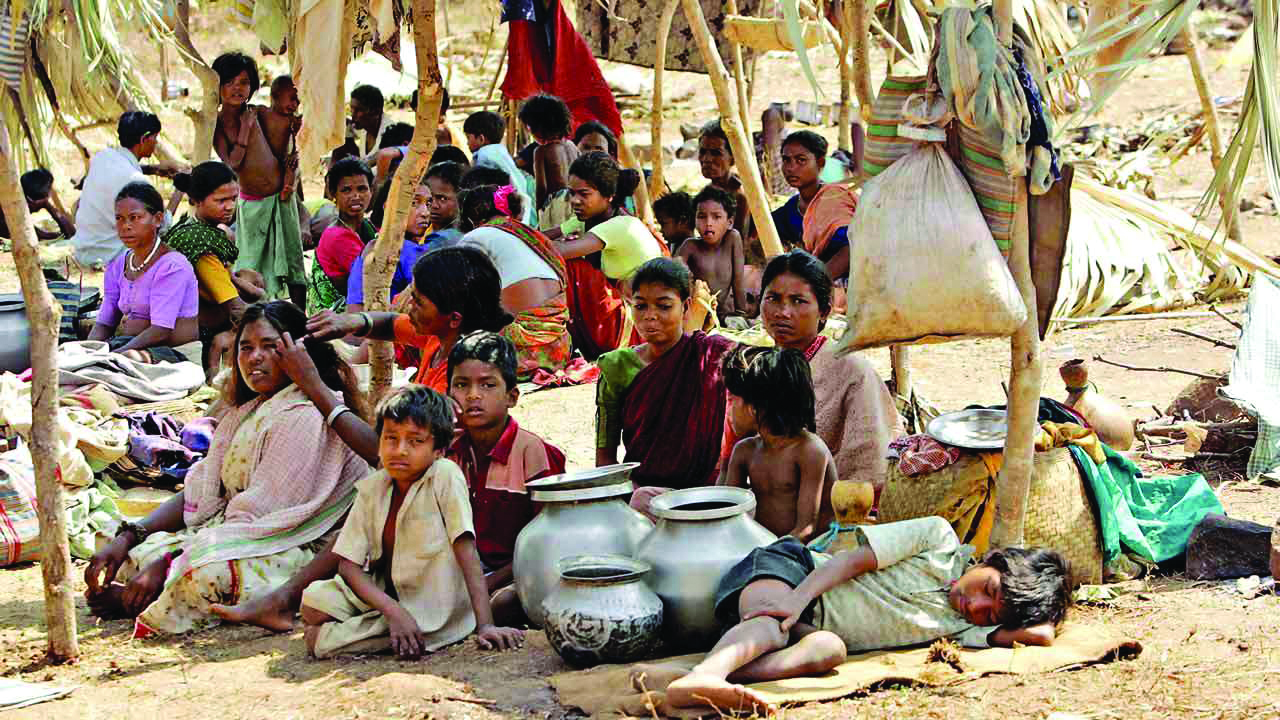Rare feat: 415 mn people in India out of poverty in 15 years, says UN

United Nations: A total of 415 million people moved out of poverty in India within just 15 years from 2005/2006 to 2019/2021, the UN said on Tuesday, highlighting the remarkable achievement by the world’s most populous nation.
The latest update of the global Multidimensional Poverty Index (MPI) was released by the United Nations Development Programme (UNDP) and the Oxford Poverty and Human Development Initiative (OPHI) at the University of Oxford.
It said that 25 countries, including India, successfully halved their global MPI values within 15 years, showing that rapid progress is attainable.
These countries include Cambodia, China, Congo, Honduras, India, Indonesia, Morocco, Serbia, and Vietnam.
In April, India surpassed China to become the world’s most populous nation with 142.86 crore people, according to UN data.
“Notably, India saw a remarkable reduction in poverty, with 415 million people exiting poverty within a span of just 15 years (2005/6 19/21),” the report said.
The report demonstrates that poverty reduction is achievable. However, the lack of comprehensive data during the period of the COVID-19 pandemic poses challenges in assessing immediate prospects, it said.
In India, 415 million poor people moved out of poverty from 2005/2006 to 2019/2021, with incidence falling from 55.1 per cent in 2005/2006 to 16.4 per cent in 2019/2021.
In 2005/2006, about 645 million people were in multidimensional poverty in India, with this number declining to about 370 million in 2015/2016 and 230 million in 2019/2021.
The report noted that deprivation in all indicators declined in India, and “the poorest states and groups, including children and people in disadvantaged caste groups, had the fastest absolute progress.”
According to the report, people who are multidimensionally poor and deprived under the nutrition indicator in India declined from 44.3 per cent in 2005/2006 to 11.8 per cent in 2019/2021, and child mortality fell from 4.5 per cent to 1.5 per cent. Those who are poor and deprived of cooking fuel fell from 52.9 per cent to 13.9 per cent, and those deprived of sanitation fell from 50.4 per cent in 2005/2006 to 11.3 per cent in 2019/2021, according to the report.
In the drinking water indicator, the percentage of people who are multidimensionally poor and deprived fell from 16.4 to 2.7 during the period, electricity (from 29 per cent to 2.1 per cent) and housing from 44.9 per cent to 13.6 per cent.
The report said that countries with different incidences of poverty also halved their global MPI value.
While 17 countries that did so had an incidence under 25 per cent in the first period, India and Congo had a starting incidence above 50 per cent.
India was among the 19 countries that halved their global Multidimensional Poverty Index (MPI) value during one period — for India it was 2005/2006 2015/2016.
According to the 2023 release, 1.1 billion out of 6.1 billion people (just over 18 per cent) live in acute multidimensional poverty across 110 countries. Sub-Saharan Africa (534 million) and South Asia (389 million) are home to approximately five out of every six poor people.
Nearly two-thirds of all poor people (730 million people) live in middle-income countries, making action in these countries vital for reducing global poverty. Although low-income countries constitute only 10 per cent of the population included in the MPI, these are where 35 per cent of all poor people reside.
Children under the age of 18 account for half of MPI-poor people (566 million). The poverty rate among children is 27.7 per cent, while among adults, it is 13.4 per cent. Poverty predominantly affects rural areas, with 84 per cent of all poor people living in rural areas. Rural areas are poorer than urban areas across all regions of the world.
Countries halved their MPI in periods as short as four to 12 years, demonstrating the feasibility of the Sustainable Development Goal (SDG) target of halving poverty according to national definitions within 15 years.
Thus, it is crucial to consider context-specific multidimensional poverty indices that reflect national definitions of poverty since the global MPI assesses multidimensional poverty with the same methodology, the report said.
The agencies, however, added that despite these encouraging trends, the lack of post-pandemic data for most of the 110 countries covered by the global MPI restricts the understanding of the pandemic’s effects on poverty.
“As we reach the mid-point of the 2030 Agenda for Sustainable Development, we can clearly see that there was steady progress in multidimensional poverty reduction before the pandemic,” the Director of the Human Development Report Office, Pedro Conceição,
said.



